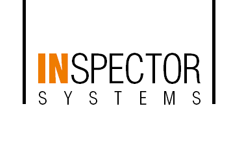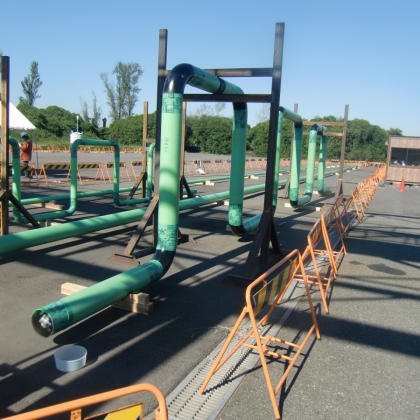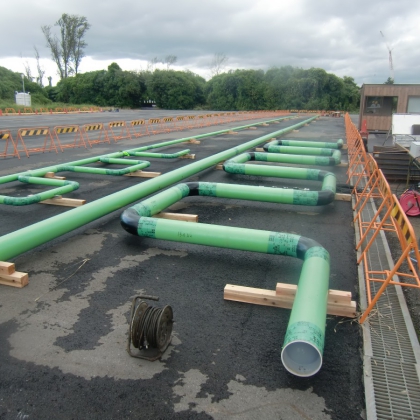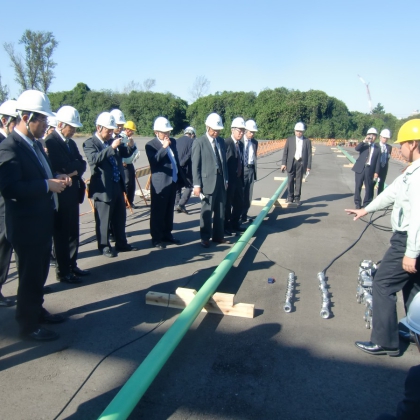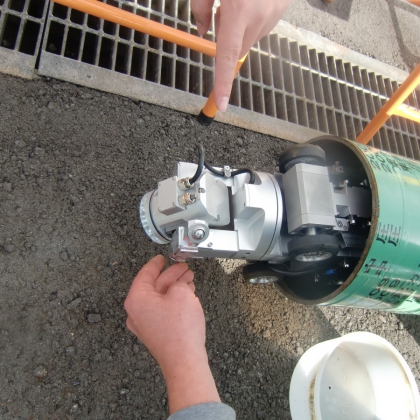Many years ago a Japanese delegation began a journey around the globe on behalf of the Japan Gas Association in order to find new technologies for the inspection of gas pipelines. Around a year and a half ago this delegation also came to visit INSPECTOR SYSTEMS in Rödermark.
And the team found a solution for its problem: with its technology INSPECTOR SYSTEMS was so compelling that in November 2010 it was commissioned to travel to Nagoya in Japan. There, as part of a research project in which the research and development department were testing new technologies for inspecting gas pipelines, the INSPECTOR SYSTEMS inspection robots completed various tests.
For this, several test courses with an internal diameter of 100 and 200 mm were constructed on the premises of Toho Gas Co. Ltd. on which the type 1000 and type 4000 inspection robots had to prove their abilities. During the first test of the one-week test phase, the type 4000 inspection robot (diameter 200 mm) raced forwards and backwards against time through a 50 metre long straight steel pipe. Three times it had to show whether it could beat its best time. Then it started on bends: on a test section with 12 bends (bending radius 1.5 D) the ability of the robot to travel through the bends was tested and at the same time the time required while travelling forwards and backwards was recorded. It also completed this section with aplomb. The type 1000 inspection robot (diameter 100 mm) also excelled on this section and proved its immense capability for traversing bends.
For the third section the client had thought up something special. The test section with 12 bends was turned upright so that vertical sections were now present. But even this difficult terrain caused the two robots no difficulties, so that the test results exceeded the expectations of the client by far.
A final trial of strength was able to fully win the Japanese over to the German technology. In steel, cast and PE pipes the robots demonstrated their maximum traction force. During this, with a pipe diameter of 200 mm the type 4000 inspection robots achieved what was considered an impossible traction force of 110 kg. Its smaller brother, the type 1000, achieved a traction force of approximately 32 kg in a pipe diameter of 100 mm. Excellent results for the robots from Rödermark in Hessen.
The research and development department was taken by surprise by the power and flexibility of the INSPECTOR SYSTEMS robots. Equally visibly impressed by the robots’ performance was an approximately 25 men-strong delegation from the Japan Gas Association which visited the test site during the middle of the week. Here too the performance of the robots spoke for itself.
As a bonus INSPECTOR SYSTEMS had also brought along the type 2000 inspection robot, which also shone on all the test courses, so that the trio was able to give the client an impression of everything that can be achieved with the INSPECTOR SYSTEMS fleet.
